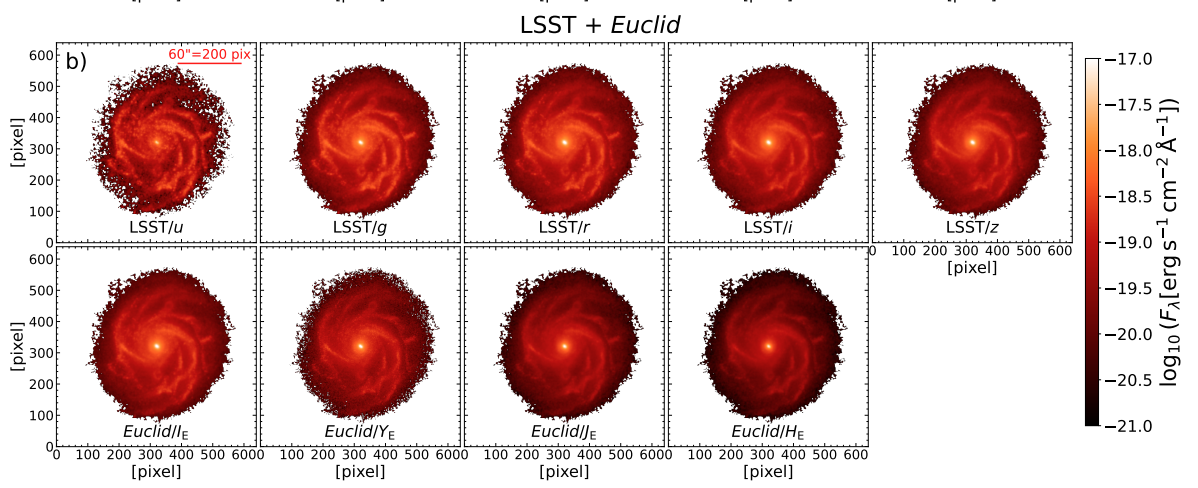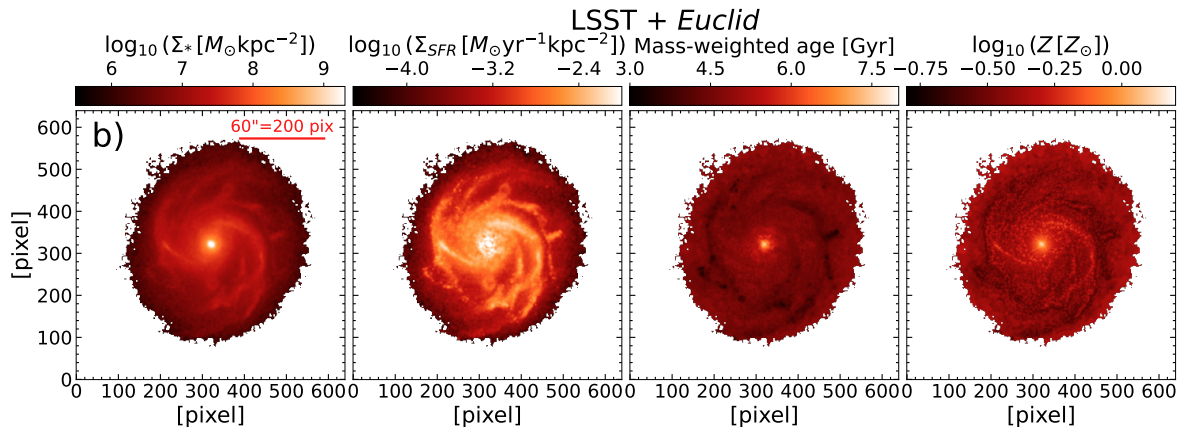Euclid preparation: LXXIII. Spatially resolved stellar populations of local galaxies with Euclid: A proof of concept using synthetic images with the TNG50 simulation
Published in A&A, 702, A72, 2025
The European Space Agency’s Euclid mission will observe approximately 14,000 deg2 of the extragalactic sky and deliver high-quality imaging for many galaxies. The depth and high spatial resolution of the data will enable a detailed analysis of stellar population properties of local galaxies. In this study, we test our pipeline for spatially resolved SED fitting using synthetic images of Euclid, LSST, and GALEX generated from the TNG50 simulation. We apply our pipeline to 25 local simulated galaxies to recover their resolved stellar population properties. We produce 3 types of data cubes: GALEX + LSST + Euclid, LSST + Euclid, and Euclid-only. We perform the SED fitting tests with two SPS models in a Bayesian framework. Because the age, metallicity, and dust attenuation estimates are biased when applying only classical formulations of flat priors, we examine the effects of additional priors in the forms of mass-age-Z relations, constructed using a combination of empirical and simulated data. Stellar-mass surface densities can be recovered well using any of the 3 data cubes, regardless of the SPS model and prior variations. The new priors then significantly improve the measurements of mass-weighted age and Z compared to results obtained without priors, but they may play an excessive role compared to the data in determining the outcome when no UV data is available. The spatially resolved SED fitting method is powerful for mapping the stellar populations of galaxies with the current abundance of high-quality imaging data. Our study re-emphasizes the gain added by including multiwavelength data from ancillary surveys and the roles of priors in Bayesian SED fitting. With the Euclid data alone, we will be able to generate complete and deep stellar mass maps of galaxies in the local Universe, thus exploiting the telescope’s wide field, NIR sensitivity, and high spatial resolution.


